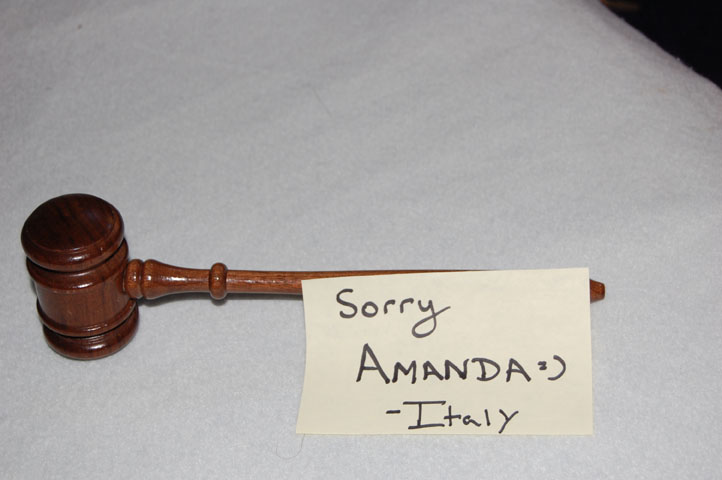Amanda Knox, an American exchange student from Seattle, returned to the United States on October 4 after spending four years in Italian prison. Knox, 24, was charged and convicted of killing her British roommate, Meredith Kercher, and was charged with 26 years in prison by an Italian jury.
Knox and her Italian ex-boyfriend, Raffaele Sollecito, were both charged with the murder but appealed their sentence on the grounds of a lack of evidence. An Italian appellate court reversed their convictions and set them free on October 3. Knox and her ex-boyfriend were convicted in December 2009 of killing Kercher in a 2007 attack that left the British exchange student partially nude and bleeding to death from a slashed throat.
From the beginning, lawyers for the prosecution called Knox a “she devil” and a liar. They twice showed grisly photos of Kercher’s bloodied body and close ups of the gash in her neck. Knox’s defense countered that she was not evil, but rather tender and loving and that the media and prosecution were misrepresenting her. Freshman Sarah Kampiyil agreed, and said, “I do think that Amanda [is] innocent. When she was first proven guilty, the situation was pointed to her but no clear evidence was found.”
Indeed, the media played a big role in the trial, with often lurid coverage occurring in the case of tabloid papers and seven books and a movie being made about the trial. Many Europeans believed her to be guilty due to increasing media coverage, but also believe that the acquittal is proof that their justice system works. Many in the media called her “Foxy Knoxy”, which helped to play up the idea of her as a femme fatale figure that slaughtered without mercy. Sophomore Pearly Pandya said, “I think the media has a gender bias against women.”
Many claimed it unfair that Amanda was tried in a foreign country, where she had no idea about the laws. Junior Akshita Parupalli said, “I think if you’re going to commit an obvious crime such as that in a different country, you should be aware of their laws.”
Forensics, however, may have played a big role in the court’s verdict. Much of the appeal revolved around whether the DNA on two key pieces of evidence was reliable. Two court appointed experts looked at the prosecution’s evidence and delivered the assessment that the manner in which the DNA was collected, stored, and tested was subpar. One involved the alleged murder weapon, a knife found in Sollecito’s kitchen. The experts said, however, that the DNA on the knife had come from bread. Also, the second piece of evidence was allegedly Sollecito’s DNA on the bra clasp cut from Kercher’s bra during the attack. The experts said it was improperly handled and had probably been contaminated.
As a result of the doubt cast on the forensic evidence, a jury of six Italian citizens and two judges found Knox and Sollecito not guilty. When she returned to Seattle, Knox held a conference at the airport but has not since been interviewed since her arrival to the United States.



















